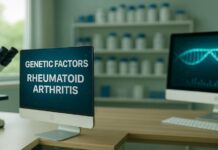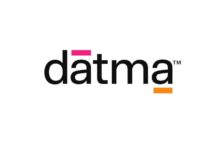Technology has gone on to change almost every aspect when it comes to the daily lives and has swiftly redefined the way one manages science. The digital disruption, which has been brought about by a massive influx of innovative technologies, has gone on to create both increasing dependency on technology as well as an accelerated digitally-enabled science. The surge of the Internet of Things- IoT, artificial intelligence- AI, and machine learning- ML offers the basis for intelligent automation and also big data-driven insights.
These, as well as other digital technologies, happen to be capable of boosting productivity and also transforming operations within the lab of the future. Lab connectivity happens to be holding the key to unlocking insights powered by the digital revolution, thereby leading to the next scientific breakthrough. Still, there happen to be many science-based organizations that are struggling to leverage such tools.
The digital transformation of R&D happens to have in it the principles of digitization to eradicate any paper-based processes, however within a framework of re-examining the overall work process. Rather than only moving the present state of data generation and also capture to electronic form, digital transformation goes on to focus on broader questions like what data gets used by whom for what requirements and if there happens to be a direct route in order to accomplish the scientific goal. All this makes it explicitly cross-functional and, at the same time, also opens opportunities for enhancement in overall operational efficiency as well as productivity in the larger business processes.
How does an integrated lab work?
The integrated lab concept happens to be a completely digital lab environment in which manual work gets eliminated, materials along with the samples are transparently managed, and work processes get connected across all instruments and at the same time flow seamlessly throughout any operational systems required to support the work. These digital workflows go on to lead to overall enhanced data quality by way of automation and explicit connectivity. The operational systems share crucial common metadata and also expose their data for usage by other systems openly and as required. An attribute of this type of data is referred to as FAIR1. It is well to be noted that the four foundational principles of FAIR data are findability, accessibility, interoperability, as well as reusability. Data flowing in and out of the lab environment has to adhere to FAIR principles so as to achieve the advantages of data-readiness in the digitally integrated lab of the future.
It is well to be noted that disconnected systems have, therefore, become a prominent pain point in the lab. Managing mixed digital as well as non-digital processes by way of using scientists to transport data is reducing operational efficiency and raising questions when it comes to quality and completeness with regards to the data. So as to overcome the challenges that arise from the continued usage of non-digital processes, today’s modern lab has to re-examine fundamental data flow.
Evaluating the generation of data as an instance, the usage of IoT-smart technology enhances data collection integrity and, at the same time, associates the intrinsic who, what, and where metadata with the instrument results. In this future state, lab instruments as well as equipment are connected to cloud storage, in which it can be processed and also mixed with other relevant enterprise data for analysis. This enhances the relationship between the instrument data as well as its use, and all consumers of the inferences happen to be given direct access to the primary instrument data that is used to support the results.
As R&D organizations go on to function with an international footprint, make use of outsourced CROs/CMOs services, and also collaborate with external partners, the requirement when it comes to an integrated digital lab becomes important for managing the secure as well as compliant bi-directional flow of data throughout a multitude of business as well as informatics platforms.
Achieving lab connectivity
Digital connectivity forms the basis for transformation when it comes to lab productivity. It is common across many scientific labs to have numerous deployments of LIMS and ELNs as well as analytical instrumentation that happens to be duplicative, siloed, aging, and also needs manual operation or transcription. So as to achieve a truly transformative lab setup, all people, processes, systems, as well as data must get connected and harmonized into a rational, scalable system and also data architecture.
The most efficient approach when it comes to digital transformation begins with a complete current-state scientific process analysis. This goes on to involve analysis as well as documentation of the lab workflows in practice, such as the current usage of systems throughout current lab equipment as well as functions. This present state assessment offers a map of pain points, which includes inefficiencies, wait states, avoidable duplication of work and data, as well as manual creation or re-creation of data. This evaluation then goes on to guide the development of optimized future state work processes, which include selected process enhancements arranged in a roadmap. The roadmap happens to be significant, thereby resolving all the pain points in a single step, which is not practical; moreover, not all the pain points are going to be independent or have the same acceptance. In practice, resolving some of the major issues should indeed be a reason to re-evaluate the workflow so as to ensure the next steps happen to be the better ones.
Sans a clear strategic plan, organizations often go on to rush to execute solutions in ways that do not support the future objectives of the business. There are tools along with services available that go on to offer the expertise and resources required to analyze, plan, as well as implement a successful digital transformation program for organizations that will thereby lead to a surge in productivity. Digital transformation does not happen to be a classic IT project. The effort that is involved happens to be different from executing a vendor system. Digital transformation is a program so as to re-think the way in which science gets done.
Follow data
Data happens to be the most valuable asset in modern science. Gaining access to the insights that data has in it is the key to data-driven R&D. An integrated lab goes on to provide the digital connectivity needed to make R&D data more effective by way of making it available when and where it is required. Digitization can eradicate workflows presently running on paper, Excel, PowerPoint, and email. Digital transformation, however, goes on to identify and stratify data based on its usage and comes up with additional connectivity among data as well as the scientists who make use of it, enabling scientific processes to become data-centric. This shift also enables advanced analytics, applying algorithms as well as AI and ML to automate and optimize R&D results by way of descriptive and predictive modeling.
Journey to the cloud
In the past decade, organizations have been embracing a cloud-first or cloud-only approach. When applied in an apt way, cloud-based IT solutions go on to offer flexible, lean, cost-efficient infrastructure that builds the pathway for more digitization and, therefore, the advent of digital transformation. The main part is flexibility. The use of the cloud alone may be essential so as to achieve the flexibility required so as to support digital transformation, but it may not be sufficient.
Cloud infrastructure should go on to permit companies to stress more on the usage of technology rather than care as well as feeding of the technology itself. This, unfortunately, is not always the case. As a matter of fact, cloud infrastructure in the real world can indeed be more inflexible than using on-premise infrastructure. This irony happens to be typically the result of the dearth of transformation in the IT organization and can be a major hurdle to digital transformation.
Partnerships among global sites as well as external business partners need to move enormous amounts of data swiftly and securely throughout the enterprise. The requirement for an agile, cost-effective IT infrastructure along with the right technology in place so as to support these efforts is a major need for attaining the integrated lab of the future.
More digital lab applications
From the perspective of lab management, how can one take full advantage of the gains when it comes to productivity that digital transformation offers? One of the most effective benefits of a digitally integrated lab happens to be the ability so as to visualize laboratory operations.
Digital connectivity helps with collaboration between teams, sites, along with external partners for the sharing of scientific information as well as data. As enhanced-reality tech becomes more available as well as suited to the lab environment, the capacity to take lab operations to a different level through hands-free or even voice-activated operations can go on to elevate absolute data collection.
One of the more labor-intensive issues within any lab environment happens to be the tracking and ordering of consumables. An integrated lab environment can help one to simplify this process by way of automated RFID tracking of consumables used, teamed with e-commerce platforms for the replenishment of such supplies. These are instances of opportunities so as to improve lab productivity by way of digitalization, thereby leading to streamlined scientific processes as well as cost savings that go on to contribute to the bottom line.
Productivity pushes innovation
Digital transformation enables R&D organizations so as to raise scientific efficiency by way of workflows that go on to support and also optimize the work of scientists. These enhancements ultimately lead to an overall decrease in operating costs as well as higher ROIs, but the major gains in productivity lead to the most dramatic transitions that are brought about by way of digital transformation- innovation.
References
1. Wilkinson, M., Dumontier, M., Aalbersberg, I. et al. The FAIR Guiding Principles for scientific data management and stewardship. Sci Data3, 160018 (2016). https://doi.org/10.1038/sdata.2016.18.


















